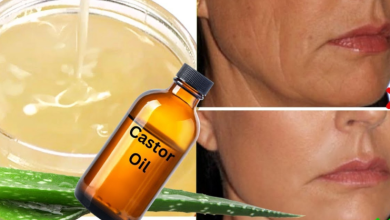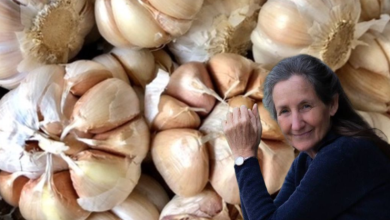Often dismissed as a mere weed, Lactuca serriola, or prickly lettuce, is a plant you’ve likely encountered in fields, along roadsides, or even in your own backyard. Despite its unassuming appearance, this plant boasts a rich history of medicinal use and offers numerous health benefits. Here’s why prickly lettuce deserves more attention and how it could benefit your health.

1. Nutritional Powerhouse
Prickly lettuce is packed with essential nutrients that support overall health. Its leaves are rich in vitamins A, C, and K, along with minerals such as potassium, calcium, and magnesium, all vital for maintaining various bodily functions.
Key Nutritional Benefits:
- Vitamin A: Promotes eye health and strengthens the immune system.
- Vitamin C: Functions as a powerful antioxidant and boosts immunity.
- Calcium and Magnesium: Supports bone health and muscle function.
2. Natural Pain Reliever
One of the most intriguing qualities of prickly lettuce is its potential as a natural pain reliever. The plant contains a milky sap, or latex, that has traditionally been used to alleviate pain and promote relaxation. Its mild analgesic and sedative properties make it a valuable remedy for minor discomforts.
Traditional Applications:
- Pain Relief: Effective for headaches, joint pain, and muscle aches.
- Sleep Aid: Used for insomnia and anxiety due to its calming effects.
3. Anti-Inflammatory Properties
Prickly lettuce is also valued for its anti-inflammatory capabilities. Compounds like lactucopicrin help reduce inflammation, providing relief for conditions such as arthritis and other inflammatory disorders.
Health Benefits:
- Arthritis Relief: Regular use may ease inflammation and pain linked to arthritis.
- General Inflammation: Supports overall health by mitigating chronic inflammation.
4. Digestive Health Support
The plant’s mildly bitter leaves are known to stimulate the production of digestive enzymes and bile, aiding in better digestion. This makes prickly lettuce a natural remedy for bloating and indigestion.
Digestive Benefits:
- Improved Digestion: Helps alleviate digestive discomfort and promotes enzyme production.
- Detoxification: Its diuretic properties support liver and kidney health by flushing out toxins.
5. Rich in Antioxidants
Loaded with antioxidants, prickly lettuce helps protect the body from oxidative stress, which can damage cells and contribute to aging and chronic diseases.
Antioxidant Benefits:
- Cell Protection: Shields cells from damage, promoting overall wellness.
- Disease Prevention: May lower the risk of chronic illnesses such as heart disease and cancer.
6. Edible and Versatile
Beyond its medicinal properties, prickly lettuce is also an edible plant. While the young leaves are tender and suitable for salads, mature leaves—though bitter—can be cooked and incorporated into a variety of dishes.
Culinary Uses:
- Salads: Add young leaves for a nutritious boost.
- Cooked Greens: Use older leaves in soups, stews, or sauté them with spices.
7. Environmental Benefits
Prickly lettuce thrives in poor soils and challenging conditions, making it a resilient plant with ecological advantages. It helps stabilize soil, prevent erosion, and provides food and habitat for pollinators.
Ecological Contributions:
- Soil Health: Prevents erosion and can improve soil fertility over time.
- Pollinator Support: Attracts bees and other beneficial insects, aiding ecosystems.
8. A Plant of Historical Importance
Prickly lettuce has been valued for its medicinal properties for centuries. Ancient Egyptians used it as a sedative and pain reliever, while in medieval Europe, it was prized for its calming effects.
Historical Significance:
- Ancient Remedy: Relied upon by various cultures for its analgesic and sedative properties.
- Herbal Medicine: Widely used in traditional European remedies.
Conclusion
Lactuca serriola, or prickly lettuce, is much more than a common weed. With its rich nutrient content, medicinal properties, and ecological benefits, this plant has the potential to improve health and well-being in numerous ways. Whether used as a natural remedy, a dietary addition, or a tool for environmental restoration, prickly lettuce deserves a second look. So, the next time you see it growing in your yard, think twice before discarding it—its hidden value might surprise you.











